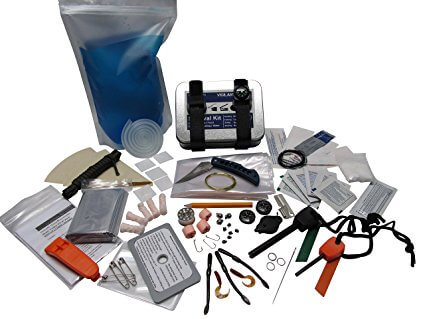With climate change and government word wars poking at everyone’s nervous system, learning a thing or two from the Navy Seals “Three is two, two is one, and one is none.” mantra may very well suit your chances for survival. While many of us put high regard on fellows who venture into the wild with nothing but wits and guts, the idea of having a backup supply for your bugout pack like that of many Navy Seal survival kit for sale today is never a bad thing.

Source: askmen.com
The Navy Seals Backup Mantra
The Navy Seals “Three is two, two is one, and one is none.” mantra is not merely used in military service alone. In fact, there are many instances in your personal life that focused on this one. You got a spare tire for your car, right? A spare key for the front door?A flashlight in every drawer strategically located all over your home? Or even backup file storage on a cloud platform for your computer data? This goes to show that even when there’s no threat around, discerning people always have a backup plan.
Things can get lost. Or perhaps, broken and fixing them will take time or can’t be done so easily without help. Sometimes, they may even be taken from you without your approval. This is even more so on certain things crucial to you and your loved ones’ survival. Think about losing your first aid kit when hiking in Mount McKinley or having your lone flashlight die on you while wading through flood waters from a cyclone. Having a backup for things critical to your survival is only fitting– and most importantly, be addressed while there’s still no apparent threat whatsoever.
The Good Side of Redundancy
The Navy Seal’s mantra on ultra-preparedness, however, need not be borderline useless. You don’t really have to pack two of everything, but rather focus on things that matter the most for survival. Being redundant on survival items allows you needed leeway should the inevitable happen and you lost or break something and there’s no hardware or pharmacy or sporting goods store to turn to. For instance, you can have one first aid kit at home, another in your bugout backpack then, a spare one in your car and a kit in your partner’s backpack as well.
The idea, however, is to not put everything in a single place. You can’t have two flashlights or three fire-starting tool or two tactical knives in a single bugout backpack. You can have a paracord bracelet and then, another one tuck into your belt though. Take this Vigilant Trails Survival Kit: Trekker-513. Stored in a crush-proof metal container, this survival kit contains all the essentials in survival– fire, food, first-aid, shelter, water and signaling. Each pack can be easily stashed in your bugout backpack and that of your loved ones as well. Take note that this kit comes fully secured by a double-compression strap with an accessible compass as well.
The epitome of a Navy Seal survival kit for sale is this– you got three (or more!) of things that will help you and your loved ones come out alive, if not unscathed, from any disaster thrown your way. Something that a Trekker-513 has to offer. While redundancy is frowned upon, having a backup in survival items should never be construed that way.
The idea is to spread out those duplicates between your own bugout backpack and your partner, or between yourself and that of your BOB when out alone.


